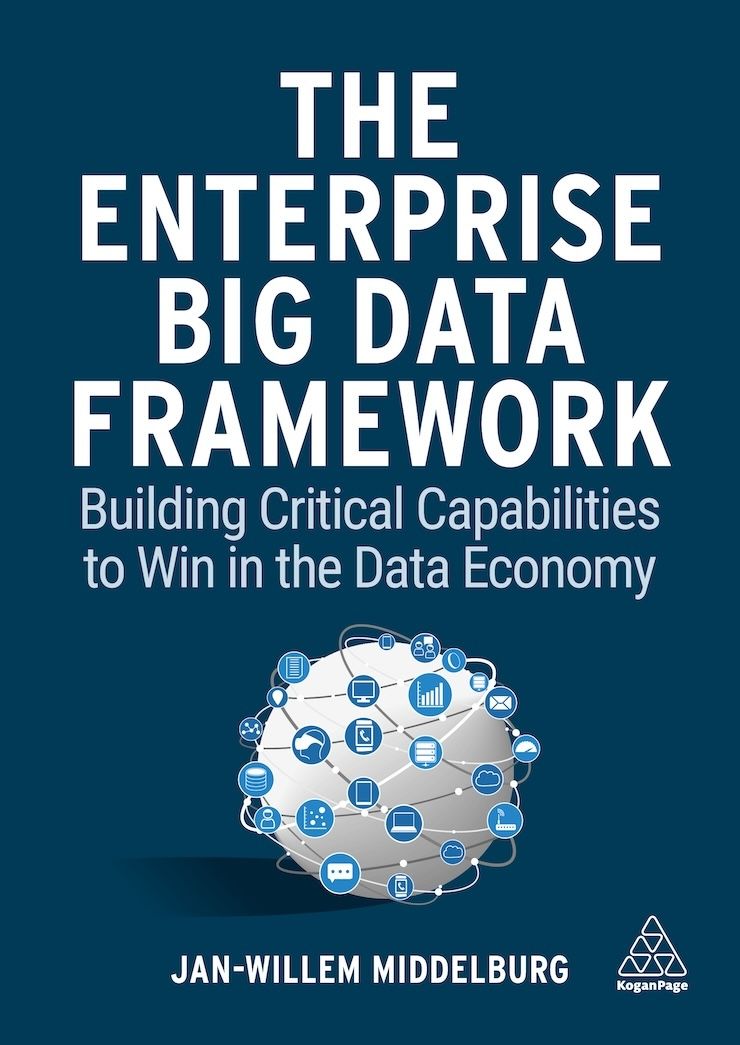If we consider Big Data as an economic resource, similar in nature to other assets, defining a Big Data strategy is a logical step. A Big Data strategy can help any organization define its strategic choices with regard to its data.
Why Is a Big Data Strategy Useful?
A Big Data strategy provides focus and guidance for everyone in the organization. It helps determine where organizations should focus their efforts and investments, and the medium and long-term objectives through which an organization can outperform competitors.
A Big Data strategy can be considered the glue that holds the other capabilities together. Choices regarding technology and tool selection, or the way that analytics or Big Data departments should be structured, or the way professional training programs should be set up, should all cascade down from an organization’s Big Data strategy.
The Big Data Strategy Capability
The Big Data strategy capability is defined as an organization’s ability to clarify how it uses internal and external data to obtain a competitive advantage and realize a positive return on investment.
The Big Data strategy capability provides focus and guidance for everyone in the organization. It helps determine where organizations should focus their efforts and investments, and the medium and long-term objectives through which an organization can outperform competitors.
Despite the great growth and popularity of analytics and Big Data solutions over the last decade, and the realization that data contains value that can provide a way to obtain a competitive advantage, multiple research reports show most fail dramatically, with reported failure rates as high as 85 per cent.
In addition, other studies show that the vast majority of organizations have not defined measurable success criteria or key performance indicators (KPIs) to measure whether their Big Data programs are successful. They have, in other words, not defined how success in Big Data should be measured and lack a Big Data strategy.
Although a formulated Big Data strategy document is a great first (and necessary) step towards effectiveness, it is also important that the formulated Big Data strategy is meaningful, executable and innovative.
Because an effective Big Data strategy is more than just a document, the Big Data strategy capability has been subdivided into several micro-capabilities: Strategy formulation, innovation management, leadership and governance, communication, sustainability and program funding.
Not surprisingly, strategy formulation is an important micro-capability. However, for a robust and competitive strategy, organizations also need to consider innovation management, leadership and governance, sustainability and communication. If, and only if, these micro-capabilities are effectively combined can an organization claim that it has a future-proof Big Data strategy.
Barriers to a Big Data Strategy
Over the years, many organizations have tried to understand common inhibitors and barriers to Big Data success. A common classification is to subdivide these barriers into technological barriers, human barriers and cultural barriers.
Whether this classification is fully complete or whether there are some additional inhibitors is, from a strategy perspective, not a very interesting discussion. The main point to learn from these barriers is to determine which capabilities can help organizations overcome failure in their Big Data strategy.
Technological barriers
The technical capacity to analyze hundreds of thousands or even millions of records or data points within an acceptable time frame is by no means an easy task. Organizations will require distinct and specialized IT infrastructure for the analysis of massive data sets. Building an IT infrastructure that can support this will require significant investments in software and hardware solutions that are necessary to support this. Despite all the technological advancements that have been made, and the easy accessibility to cloud computing, setting up a Big Data environment is still a challenging technological task.
Additional technological complexities, and therefore barriers to a successful Big Data strategy, are the result of the ever-increasing velocity and variety of characteristics of Big Data. Because data sets are growing so rapidly, keeping an infrastructure in place that can support this is a challenge. A Big Data environment that might have been suitable a few years ago might pose technical challenges or security risks today. Keeping up with the rapid developments, innovations and product updates requires full-time attention.
Human barriers
Human factors are a second barrier to any Big Data strategy. Even if you have defined the most innovative and exciting Big Data strategy in the world, it will be worthless if people deviate from its objectives. There are many examples across the world where human behavior is contrary to the facts that are shown by data. The classic example is smoking, where even though data sets make a compelling case to abstain from smoking, many people don’t act based on that data.
Cognitive dissonance is important in the context of analytics and Big Data. If a Big Data strategy is aimed at data-driven decision making, but people don’t make decisions in line with this strategy, it will not have any effect. To address cognitive dissonance, it is important that senior leaders in the organization promote data-driven decision-making, and that they lead by example. Additionally, it is important that there are processes and systems in place to safeguard the data analysis process, so that the outcome of data analysis can be trusted.
Lack of Skills
Another important barrier to the successful execution of a Big Data strategy is a lack of skills. A lack of technical and analytical skills in organizations is consistently identified as one or the major reasons why progress with Big Data solutions has been delayed, or why strategies have failed. To take it further, some CIOs have even stated that Big Data skills shortages have hindered their organization’s ability to keep pace with innovation and change.
Addressing the skills gap is therefore not something that should only be addressed once a Big Data organization is up and running. Rather, it should be addressed as an integral part of the Big Data strategy itself. Without adequate knowledge and skills, it becomes impossible to execute the strategy.
Cultural barriers
The last major barrier for implementing a Big Data strategy has to do with organizational culture. By organizational culture we mean the set of assumptions and beliefs that are prevalent in a particular organization.
In many organizations, barriers are not just formed by technology or individuals but can also be the result of the way organizations are fundamentally structured.
For example, some organizations lack the overall understanding of how Big Data can improve their business operations and consequently, see little value in pursuing Big Data initiatives. Cultural barriers are ultimately formed by the group of individuals that make up the organization, which is why there is a strong relationship with the human barriers.
Out of all the barriers discussed, cultural barriers might be the most difficult to overcome. An organizational culture establishes over time, and it takes time and significant effort to change culture. For Big Data strategies to be executed, it is important that there is enough support in the organization. Why is data-driven decision-making necessary, and what are the advantages for the organization and its employees? The answers to these questions need to be continuously reinforced.
DBS Bank: A Big Data Strategy Example
DBS, one of the premier and largest banks in Singapore, has a strong Big Data strategy in place, focused on leveraging Big Data capabilities to increase customer service, and intelligent banking capabilities. DBS Bank was the first to add predictive technology to its mobile applications, which proactively offers suggestions to customers on how to manage their money more effectively or cut losses on investments.

As part of its strategy, DBS Bank has a company-wide training and upskilling program in place to ensure that its implementations are effective and long-lasting. To accomplish this goal, DBS Bank trained more than 16,000 of its employees with Big Data and data analytics skills within a period of 18 months.
The case study from DBS Bank showcases several important capabilities that the organization concentrated on. Their strategy is focused on intelligent banking (innovation management) to provide better service and intelligent banking capabilities (sustainability). More importantly, the strategy was executed as part of a larger plan where top management (leadership) set up an enterprise-wide training program (continuous learning) for more than 16,000 employees.
When it comes to implementing Big Data strategies, leadership and decision making play a critical role. Because of the technological, human and cultural barriers, the leadership of an organization is ultimately responsible for the success or failure of the Big Data strategy. Individual leaders are required to create and sustain the vision of the organization, and to subsequently build the required capabilities.
Excerpted from Chapter 5 of The Enterprise Big Data Framework by Jan-Willem Middelburg ©2023. Reproduced and adapted with permission from Kogan Page Ltd.





